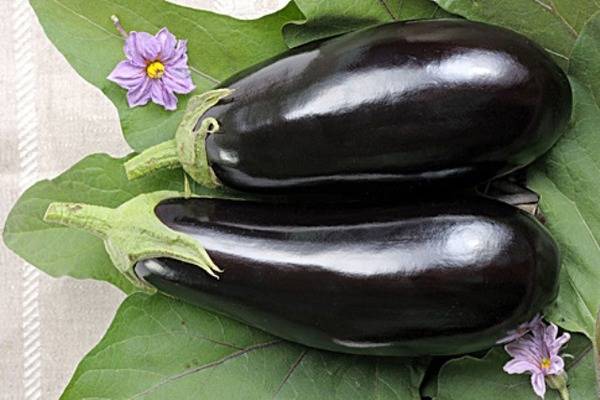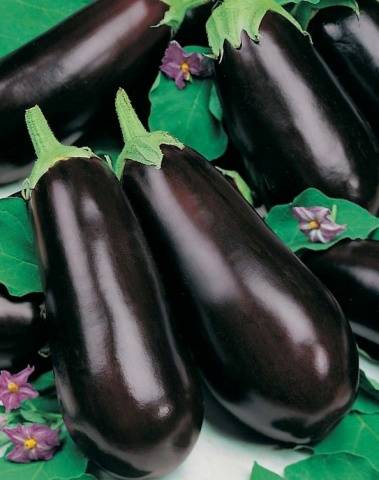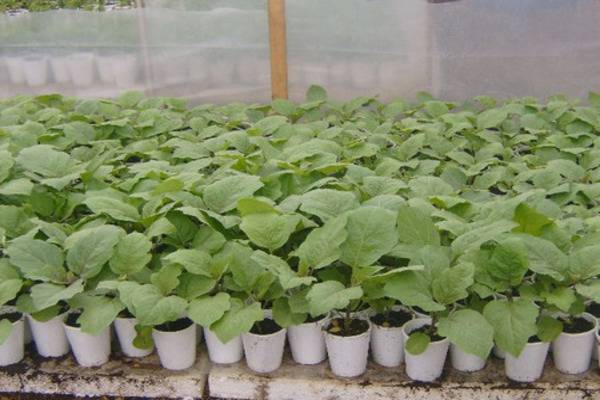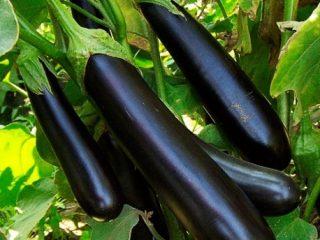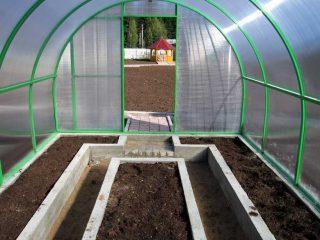Content
It is already difficult to surprise someone with eggplant beds. And experienced gardeners try to plant new varieties on the site every season. Only on personal experience can you check the quality of the fruit and evaluate the novelty.
Description of the hybrid
Mid-season eggplant Hippopotamus F1 belongs to hybrid varieties. Differs in high productivity. The bushes are characterized by moderate pubescence (oval leaves) and grow up to 75-145 cm in film greenhouses, and up to 2.5 m in glazed structures. The period from germination to the first ripe vegetables is 100-112 days.
Fruits ripen weighing up to 250-340 g. Eggplant has a deep purple color and a skin with a smooth, shiny surface (as in the photo). Pear-shaped fruits grow 14-18 cm long, about 8 cm in diameter. The yellowish-white flesh has an average density, practically without bitterness.
Advantages of Begemot F 1 eggplants:
- beautiful fruit color;
- high yield - about 17-17.5 kg of fruit can be harvested from a square meter of area;
- excellent taste of eggplant (no bitterness);
- the plant is characterized by weak thorniness.
The yield of one bush is approximately 2.5 to 6 kg and is determined by the climatic characteristics of the region.
Growing
Since the Behemoth variety belongs to the mid-season, it is recommended to start sowing seeds at the end of February.
Sowing stages
Before planting, the seed is treated with growth stimulants ("Paslinium", "Athlete"). Such a procedure increases the germination of seeds, reduces the likelihood of seedling disease, and increases the duration of flowering. To do this, the fabric is moistened in a solution and the grains are wrapped in it.
- As soon as the grains hatch, they are seated in separate cups. As a primer, you can use a special potting mix available from flower shops. The pits for the grains are made small - up to 1 cm. The soil in the containers is preliminarily moistened. The seeds are sprinkled with a thin layer of soil, sprayed with water from a spray bottle (so that the earth does not compact).
- All containers are covered with foil or placed under glass so that moisture does not quickly evaporate and the soil does not dry out. Containers with planting material are placed in a warm place.
- As soon as the first shoots of Behemoth eggplants appear, the covering material is removed and the seedlings are placed in a well-lit place, protected from drafts.
About three weeks before the seedlings are transplanted into the greenhouse, the eggplant seedlings begin to harden. To do this, the containers are taken out into the open air, first for a short period, and then gradually the time spent outdoors is increased. This procedure helps the seedlings to take root faster during transplantation.
Before planting the bushes in the greenhouse, eggplant is fed. As soon as the first true leaves appear on the stems, "Kemiru-Lux" is introduced into the soil (25-30 g of the drug is diluted in 10 liters of water) or a mixture of fertilizers is used (30 g of foskamide and 15 g of superphosphate are dissolved in 10 liters of water). Re-feeding is carried out 8-10 days before transplanting seedlings into the greenhouse. You can use Kemiru-Lux again (20-30 g per 10 liters of water).
Transplanting seedlings
Eggplant seedlings of the Begemot variety can be planted in film greenhouses at the age of 50-65 days.Better to navigate at the end of May (in central Russia). The soil is prepared in advance.
The order of the location of the holes: row spacing - 70-75 cm, the distance between plants - 35-40 cm. It is desirable that no more than 5 eggplant bushes be placed on a square meter of area.
It is not recommended to plant seedlings tightly in the greenhouse, as this can lead to a decrease in the yield. Before planting seedlings, the soil must be watered.
Watering and feeding
It is advisable to take warm water to moisten the earth. The first time after transplanting, the seedlings are watered after five days. Greenhouse watering of eggplants of the Begemot variety is best done in the morning, while water should not be allowed to get on the green mass. The best option is to arrange a drip irrigation system. In this case, the soil at the roots will be evenly moistened and a crust will not appear on the soil surface. During the heat, it is imperative to mulch the soil and ventilate the greenhouses, since high humidity can cause the appearance and spread of diseases.
A suitable greenhouse humidity level is 70%. To prevent the plants from overheating in hot weather, it is recommended to open the greenhouse for ventilation. Otherwise, when the temperature rises to + 35˚C, pollination and the formation of ovaries noticeably slow down. Since hippopotamus eggplant is a thermophilic culture, it is important to prevent drafts. Therefore, it is only necessary to open the door / windows from one side of the building.
During flowering and fruiting, eggplants of the Begemot variety are especially in need of nutritious soil. Therefore, the following dressings are used:
- during flowering, a solution of ammophoska is introduced into the soil (20-30 g per 10 l of water). Or a mineral mixture: a liter of mullein and 25-30 g of superphosphate are dissolved in 10 liters of water;
- during fruiting, you can use a fertilizer solution (for 10 liters of water, take half a liter of chicken manure, 2 tablespoons of nitroammofoska).
Eggplant care in the greenhouse
Since eggplants grow quite tall, the stems must be tied up. The best option is to fix the bush in three places. If the size of the structure is small, then the hippopotamus eggplant bush is formed from one stem. At the same time, a powerful shoot is chosen for growth. When ovaries form on the bush, they are thinned out and only the largest ones are left. The tops of the shoots, where the fruits have set, should be pinched.
About 20 strong ovaries are usually left on the bush. It is also determined by the parameters of the plant - whether it is strong or weak. The stepsons must be removed.
According to some gardeners, eggplants do not need garters as the stems are very powerful. But when the fruit ripens, tall plants can simply break. Therefore, they practice tying the stems to a trellis or high pegs.
Tight fixation can inhibit the development of the bush.
When growing eggplants in a greenhouse, it is important to remove yellowed and withered foliage in time. This should be paid attention to several times a week. During hot and humid weather, unnecessary stepchildren are cut off, especially at the bottom of the bush. If dry weather sets in, then the stepchildren are left to reduce the evaporation of the soil.
At the end of the season (in the last days of August), 5-6 ovaries are left on the bushes of eggplant varieties Begemot.As a rule, the matured fruits have time to ripen before a strong autumn drop in temperature.
Harvest
Eggplants of the Begemot variety are cut with a green cup and a small section of the stalk. Ripe fruits can be harvested every 5-7 days. Eggplants do not have a long shelf life. It is recommended to fold ripe fruits in dark cool rooms (with an air temperature of + 7-10˚C, humidity 85-90%). In the basement, eggplants can be stored in boxes (the fruits are sprinkled with ash).
Eggplant varieties Begemot are excellent for growing in different regions, as they grow well in greenhouse conditions. With proper care, the bushes delight summer residents with high yields.
